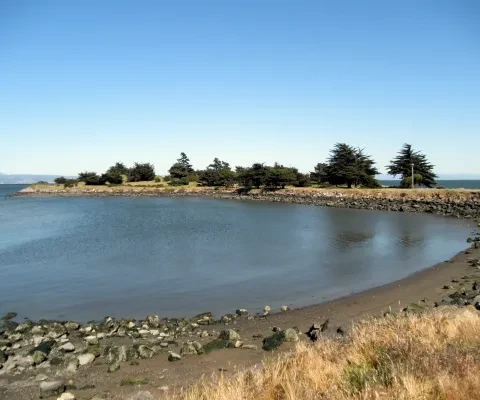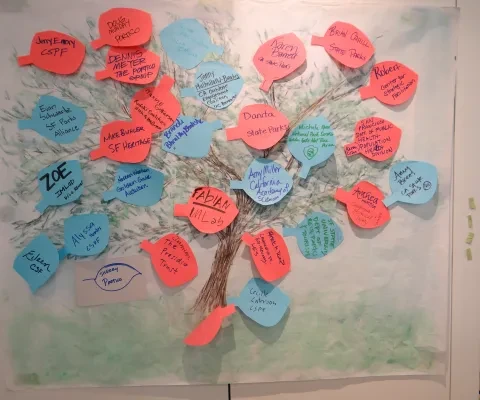GUEST BLOG BY CSPF INTERN ALYSSA HEMLER. Alyssa is a junior at Oberlin College in Ohio majoring in Environmental Studies with a concentration on urban sustainability and sustainable communities.
The shoreline at Candlestick. Photo by 4johnny5 via Flickr.[/caption] In 2011, California State Parks Foundation (CSPF) began construction to restore wetlands and create a park on the northern Yosemite Slough waterfront area of Candlestick Point State Recreation Area. A lot has been accomplished in the years since, but there is still so much to be done. In the short time that I’ve been interning with CSPF, I have learned a lot about the extensive planning process for this park. Not only does CSPF need to raise all of the money for this project (over $25 million), but there are three phases of the actual restoration/ park building. The first phase, restoring the north side wetlands, was completed in June of 2012. Currently, they are in phase two – public access and visitor use. This includes all of the capital improvements for the park (benches, an interpretive center, a picnic area, etc.) as well as all educational programming. There is a lot of planning for phase 2. CSPF has gathered an advisory committee made up of experts who specialize in various aspects of parks and recreation: natural history, environmental and citizen science, cultural history, youth and community outreach and engagement, health and recreation, art, and policing and security. This committee will meet a total of six times in the next 12 to 14 months to help develop the first interpretive master plan for the park. An interpretive master plan aims to improve the visitor experience through development of interpretive facilities, educational and multimedia programs, interpretive signage, and enhanced recreational opportunities. This includes planning activities to have in place for Yosemite Slough at the anticipated opening at the end of 2017. Throughout the whole planning process, the advisory committee will help foster strong community involvement in this historically underserved community.
A working board from the first advisory committee meeting on January 26, 2016. Because the advisory committee is composed of experts from a variety of educational, professional, and personal backgrounds, incorporating all of the different ideas and viewpoints will be a lot of work, but is essential for an effective and rewarding planning process. So although it may seem like park building is moving slowly, there is a lot of work being done behind the scenes to make this park a reality.

